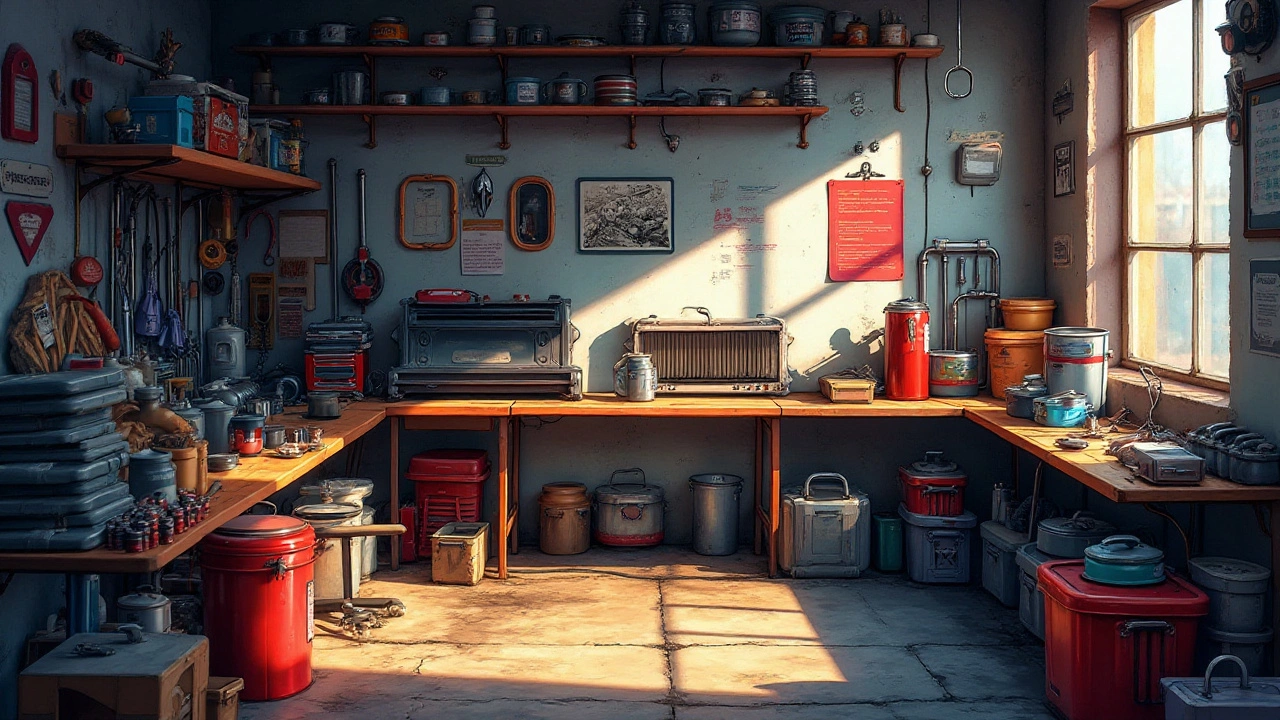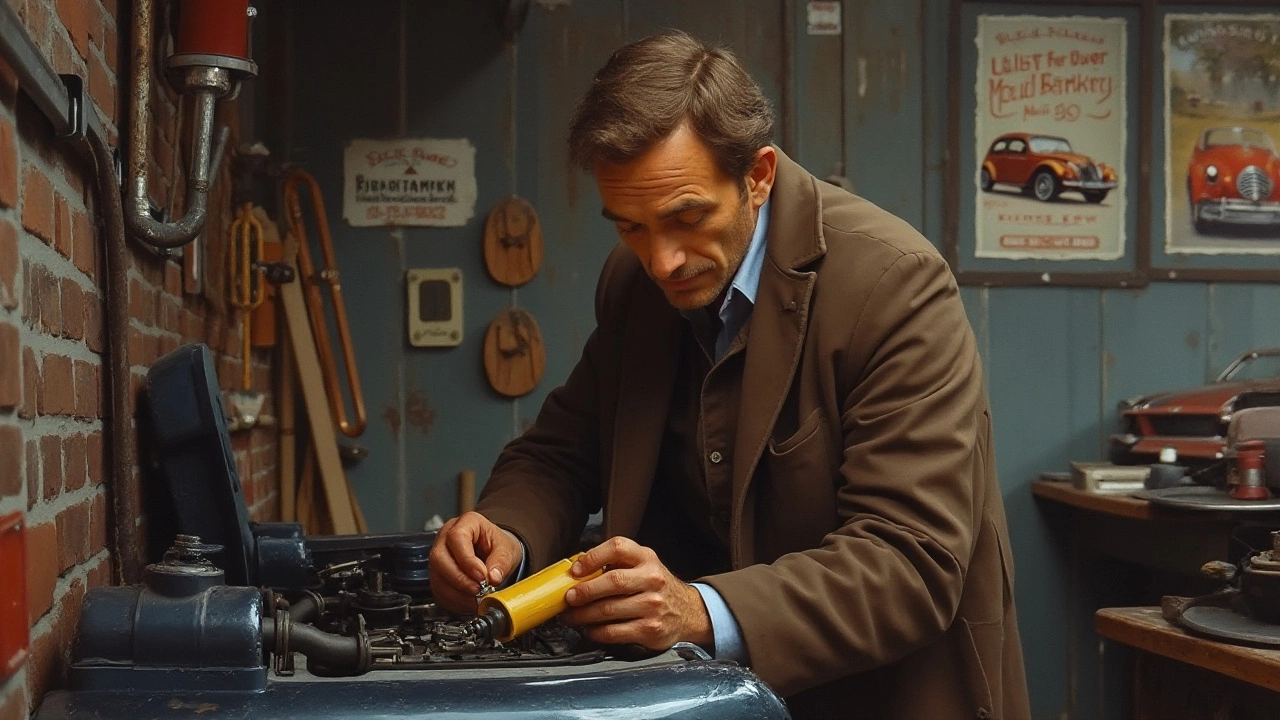Car radiators are crucial for keeping your vehicle's engine cool, preventing it from overheating during your daily travels. When problems arise, it’s a common misconception that replacement is the only option. Thankfully, that's not always the case.
Understanding the source of a radiator problem can often lead to a simpler, and more cost-effective, solution. You may deal with a minor leak, crack, or clog by yourself with some basic tools and a bit of patience. It's possible to address these issues if you know where to look and what steps to take, potentially extending your radiator’s life without incurring the expense of a full replacement.
- Common Radiator Problems
- DIY Fixes for Radiator Issues
- Tools and Materials You Need
- When to Consult a Professional
Common Radiator Problems
The radiator is a critical component in your car's cooling system, tasked with removing heat from the engine to prevent overheating. However, like any part, it can run into trouble. Knowing the common issues that plague car radiators can help you identify problems early. One of the most frequent issues is a radiator leak. These leaks are often caused by corrosion, the bane of cooling systems, which occurs as a result of sediment buildup over time or the reaction between different metals. You might notice fluid under your parked car, which points to coolant escaping from the radiator. Left unchecked, this leads to low coolant levels and potential overheating.
Another prevalent issue is the clogging of radiator tubes. Debris and deposits can obstruct the flow of coolant, reducing the radiator's efficiency. If your car's engine is overheating despite adequate coolant levels, clogged tubes might be to blame. Additionally, wear and tear from age or damage often leads to cracks in the radiator hoses or the tank itself. These seemingly minor cracks can expand, leading to significant coolant loss. A boiling or hissing noise might accompany this issue, triggered by escaping steam. Sometimes, radiators also suffer from defective radiator caps. The cap is responsible for maintaining the pressure within the cooling system, and if it fails, the system can become depressurized, causing the coolant to boil and the engine to overheat.
"A radiator cap acts like a pressure valve in a car's cooling system, crucial for maintaining the right balance," notes Mike Allen from Popular Mechanics.
Also noteworthy is the risk of water pump damage due to faulty radiators. The pump circulates coolant through the engine, and any radiator issue can cascade, impacting the water pump's efficiency. One surprising but less common problem involves air pockets in the cooling system. Trapped air can impede coolant flow, leading to overheating. This can occur after a coolant flush or if there’s a leak that introduces air into the system. Regular maintenance and checks are vital in keeping these issues from turning into costly repairs. According to a study presented by the Car Care Council, about 60% of vehicle breakdowns are related to cooling system failures, many of which are preventable.
Recognizing these radiator problems early on allows for quick intervention, saving you time and money down the road. It’s true, mechanics are trained for this, but some issues might be simpler than they appear, and with a bit of knowledge—and perhaps some online tutorials—you might be able to rectify them yourself.
DIY Fixes for Radiator Issues
Dealing with radiator leak fix and other issues doesn’t always have to spell trouble. Sometimes, all it takes is being prepared to roll up your sleeves a little. One of the most common problems you might face with a radiator is a leak. When coolant slowly drips from the radiator, it results in a decrease in the engine’s cooling capability. Such leaks can often be attributed to tiny cracks or holes in the radiator. In these cases, purchasing a radiator leak sealant from an auto store may very well be the quickest fix. These sealants are formulated to clog small breaches through chemical bonding with the surfaces inside the radiator, essentially acting as an internal bandage.
Crucially, you'll want to know where exactly the leak is coming from before applying any sealant. Take the time to inspect the radiator thoroughly. Look underneath the vehicle where it’s parked to notice any wet spots and trails. Should you spot wetness or see any dripping, that's a solid indicator, but be thorough: clean the radiator with a damp rag and run the engine to observe where the wetness begins anew. This process ensures that when you apply the sealant, it's targeted to the right location. An effective application not only seals the current problem but can also prevent potential leaks in the same area.
Some radiator issues can also stem from clogs, which prevent the coolant from circulating properly through the system. Clogs often originate from deposits that build up over time, especially in older vehicles. Performing a radiator flush at home can revitalize your car's cooling system. This technique involves draining the existing coolant, flushing the system with water to clear any trapped debris, and refilling it with fresh coolant. You'll need a garden hose, a drain pan, a funnel, and new coolant. The entire process, although a bit messy, is essential for maintaining optimal thermal management within your car.
To perform a radiator flush, follow these steps:
- Ensure the engine is cold to prevent scalding. Open the radiator cap.
- Position a drain pan under the radiator and open the drain plug. Allow the old coolant to drain completely.
- Close the drain plug and fill the radiator with water using the garden hose.
- Turn on the vehicle, setting the heater to maximum to allow water circulation for several minutes.
- Turn off the engine, once done, and repeat the draining of the now dirty water.
- After refilling with fresh coolant, recap the radiator, and you'll notice improved efficiency.
“A thorough flush and fill will help keep your cooling system in top condition and prevent your radiator from overheating in the long summer months,” suggests renowned automotive expert Alex Coleman.Notably, one must also pay close attention to the radiator cap. This little piece, often overlooked, is integral to maintaining the right system pressure. Old or worn-out caps can lead to pressure loss and subsequently to overheating. Replacing the radiator cap is straightforward and inexpensive, yet it’s a solution that is sometimes the difference between a smoothly running engine and constant temperature issues.

Tools and Materials You Need
When it comes to tackling a car radiator repair on your own, the key is having the right set of tools and materials. You don’t need to be a professional mechanic to handle common car radiator repair tasks, but having the right items can make the process smoother. Imagine yourself equipped with all the necessary gear, standing confidently by your car, ready to solve those minor issues before they turn into bigger headaches.
First on your list should be a basic toolkit. A set of wrenches and pliers will be your best friends when dealing with radiator hoses and clamps. It's amazing how often a loose connection is at the heart of radiator issues. With the right tools, you'll feel like a radiator whisperer in no time. A screwdriver set comes in handy too, especially for tightening or loosening clamps and screws around the cooling system.
A radiator pressure tester is another handy tool. This gadget helps you identify leaks by pressurizing the cooling system and showing where the pressure drops. It's essentially like having a detective on your team, spotlighting areas needing attention. And if you want to be super precise, a digital thermometer can help you monitor engine temperatures, ensuring your radiator repair is successful.
"Prevention is better than cure, and when it comes to car maintenance, having the right tools at your disposal can save you time and money in the long run." – Auto Expert, John Doe.
Now, for materials, radiator leak sealant is a must-have. This magical substance can fill small cracks from inside out without taking apart the radiator. Add a tube of gasket sealant to your arsenal, just in case you need to reseal any parts. Having a spare radiator hose can also be a lifesaver. Radiator hoses wear out over time, and they’re inexpensive to keep around just in case. Remember, keeping your car cooling system in top shape often comes down to these little things.
Deionized water and a jug of antifreeze are essential, too. The mix keeps your engine cool and prevents corrosion inside the radiator. With these, you can be confident your car is running as efficiently as possible with the best possible coolant mixture. Don’t underestimate the power of a good drain pan and some old towels, either. Cleaning up is part of the process, and no one likes antifreeze staining their driveway. Finally, a flashlight can be invaluable when peering into your engine bay, giving you the visibility to spot potential issues.
Having all these tools and materials ready not only prepares you for any radiator mishaps that may arise, but also provides peace of mind. Understanding what you need is the first step to ensuring your car always stays in top shape. Armed with this knowledge, you’ll be ready to handle whatever pesky radiator problems come your way.
When to Consult a Professional
Even though lots of radiator issues can be tackled with a bit of elbow grease and patience, there are times when calling in a professional is the best course of action. Knowing when to seek expert assistance not only saves time but can also prevent bigger problems down the road. A car radiator repair is something you don't want to get wrong. For instance, if your radiator is severely cracked, continuing to drive your car might lead to engine damage, which could be more costly than calling for help right away.
If you notice that the radiator's corrosion is beyond a superficial level, that’s a significant red flag. Corrosion can eat away at key components, weakening the overall structure and efficiency of the radiator. If the damage spans across large areas or key parts like the radiator tank or core, this is when you really ought to consult the pros. They have the right equipment to test pressure and accurately pinpoint areas of failure which might be missed by the untrained eye or using basic tools. A radiator issue might sometimes be complicated by other parts of the cooling system that interact with it, such as the thermostat or the water pump, and only a specialist can unravel this radiator mystery effectively.
"A stitch in time saves nine," as the saying goes, but with radiators, seeking timely professional help can save both money and a whole lot of trouble down the road.
If the radiator leaks aren't just tiny drips but sprays or streams, it’s time to hang up the DIY gloves. Fixing such significant leaks often requires expertise in radiator leak fix practices and possibly special ordering parts you might not have access to. You certainly wouldn't want to fix one leak just to unknowingly ignore others, only for them to burst in a spectacular fashion on your next long drive or when you least expect it. In any scenario where quick fixes and products like sealants have repeatedly failed, or where temporary solutions keep resulting in the same issues, it’s best to get a professional analysis. This helps in arriving at the root cause and not just addressing symptoms of recurring problems.
There are other symptoms too that suggest the radiator issue you are faced with might not be a simple fix. Repeated overheating even after simple fixes have been tried, unusual noises from the cooling system, or discoloration in the coolant are all signs that a more comprehensive diagnostic, which usually only a professional can provide, is needed. Recognizing when a situation is beyond your scope not only saves your radiator but could save your engine. The pros have the diagnostics and know-how that could make all the difference, and leveraging their skills could be the smartest move for your car cooling system.

